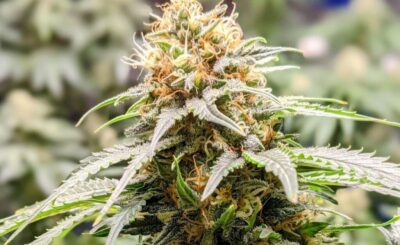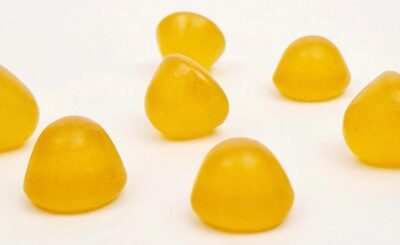Amphetamine use disorder (AUD), according to the Lecturio Medical Library is a condition described by pathologic utilization of psychostimulants. Amphetamines produce their result by expanding the delivery and obstructing the reuptake of synapses (dopamine, norepinephrine, serotonin). Medicinally, they are utilized for the treatment of ADHD and narcolepsy. Methamphetamines thus called fashioner drugs have no clinical use. Inebriation brings about rapture, pupillary widening, hypertension, skin abrasion, neurosis, and serious animosity. Deadly inconveniences can emerge from myocardial localized necrosis and unconsciousness. The visualization for AUD is poor, as there is no FDA-supported pharmacotherapy, however psychosocial intercessions have been related with further developed results.
Definition and Epidemiology
Definition
Amphetamine use problem (AUD) is characterized as the persistent (> a year) maladaptive utilization of amphetamines or different energizers.
Most normal substances utilized: remedy pills, for example, dextroamphetamine and sporting medications like methamphetamines and methylenedioxymethamphetamine (MDMA)
Inebriation:
Expanded energy and rapture
Psychomotor tumult, hostility
Energizer incited maniacal issues and daze may likewise happen.
Withdrawal:
Advancement of a substance-explicit condition because of the suspension (or decrease) of substance use
Patients experience physical (sickness, the runs, chills, and body throbs) as well as mental manifestations (wanting or saw need to utilize the substance).
Resistance:
The need to expand the portion of the substance to accomplish wanted impact (lessened impact if utilizing a similar measure of the substance)
The study of disease transmission
People are similarly influenced by AUD.
Amphetamine-type energizers rank as the second most broadly utilized illegal substance, behind maryjane.
Makes significant general wellbeing and law requirement issues auxiliary to utilization
Sorts of amphetamines
Traditional amphetamines:
Dextroamphetamine, methylphenidate, and methamphetamine
Distinguished in routine pee drug screening (bogus positive outcomes might happen with the utilization of pseudoephedrine, bupropion, or beta-blockers)
Nonclassical amphetamines: synthetically ordered as amphetamines, however clinically viewed as stimulants
Subbed amphetamines or “fashioner” drugs:
Incorporates MDMA (“happiness” or “party drug”)
Not distinguished by pee drug screening
Shower salts:
Manufactured cathinones (huge group of amphetamine analogs)
System of activity is like that of amphetamines.
Delayed length of impact (days to weeks)
Not identified in pee drug screening
Pharmacological properties
Old style amphetamines: block reuptake and work with the arrival of catecholamines, like dopamine and norepinephrine
Nonclassical amphetamines: same impact as traditional amphetamines, in addition to serotonin discharge
Quick oral retention and fast beginning of activity
Most normal courses of organization:
Smoking (68%)
Grunting (31%)
IV infusion for quicker initiation
Clinical Presentation and Diagnosis
The conclusion of amphetamine inebriation and withdrawal is made dependent on the side effects, taking a background marked by utilization, and pee drug screening.
Amphetamine inebriation
General: hyperactivity, rapture, dry mouth (prompting tooth rot), disturbance, psychosis
CNS: hyperreflexia, seizures
Cardiovascular framework: ↑ pulse, tachycardia, arrhythmia
GI: sickness, ischemic colitis
Outer muscle: skin abrasion, bruxism (teeth crushing)
Ophthalmologic: pupillary expansion
Amphetamine withdrawal
Critical to acquire itemized history of amphetamine use, including latest use
General: disquietude, upset rest, peevishness
CNS: exhaustion, cerebral pains, quakes
GI: hunger
Ophthalmologic: choked students
Patient enters a condition of extreme sadness after inebriation (“crash” stage).
Withdrawal isn’t perilous; notwithstanding, patients might foster self-destructive ideation.
The board and Complications
Amphetamine inebriation
Controlling disturbance and thoughtful overactivity are the primary strides in administration. The way to deal with amphetamine inebriation incorporates:
General measures:
Rehydrate.
Right electrolytes.
Treat hyperthermia (forceful sedation, neuromuscular loss of motion, and liquid revival).
Treat thoughtful overactivity (antihypertensives).
Drugs:
Benzodiazepines: first line choice to diminish disturbance, likewise lower BP
Antipsychotics may be useful, particularly in forceful patients.
For bliss inebriation: Consider dantrolene (postsynaptic muscle relaxant).
Amphetamine withdrawal
Pillar of treatment is steady.
Drugs:
In the event that self-destructive, think about antidepressants.
Short course of benzodiazepines or antipsychotics may assist with diminishing peevishness and tension.
Amphetamine use issue
Doctors should attempt to construct a compatibility with patients to treat basic state of mind problems or behavioral conditions.
Psychotherapy and mental mediations:
Possibility the board
Backslide avoidance
Opiates Anonymous
There is no FDA-endorsed pharmacotherapy for amphetamine reliance.
Bupropion has demonstrated to be useful in steady administration.
Entanglements
Cardiovascular entanglements:
Driving reason for death among methamphetamine clients
Arrhythmia
Myocardial dead tissue
Dangerous hypertension
Neurologic entanglements:
Hemorrhagic stroke: 5-overlap expanded danger
Compulsory jerks, seizures
Extreme lethargies
Physically communicated infections (STDs):
Methamphetamines increment drive and hazardous sexual conduct.
IV infusion builds the transmission of STDs.
Differential Diagnosis
Cocaine inebriation: Cocaine is a backhanded sympathomimetic that obstructs the reuptake of dopamine, epinephrine, and norepinephrine from the synaptic separated, causing an energizer impact (elation, expanded energy, crabbiness, psychosis, diminished hunger, weight reduction) like that of amphetamines. Withdrawal indications incorporate extreme despondency and weariness. Treatment choices are restricted and incorporate benzodiazepines for intense inebriation just as psychotherapy for long haul therapy. Amphetamines and cocaine are frequently taken together.
Drug inebriation: Hallucinogens are substances that cause perceptual twists (visual or hear-able) that are utilized for their hallucinogenic impacts (impermanent changed condition of cognizance). Like amphetamine inebriation, psychedelic drug inebriation might prompt queasiness, spewing, and gentle sympathomimetic impacts (tachycardia, hypertension, mydriasis, hyperthermia, and diaphoresis). Stimulants don’t bring about actual reliance or withdrawal manifestations.
Inhalant inebriation: Inhalant use problem includes the maltreatment of inhalant substances (e.g., stick, paint, lighter liquid). To arrive at euphoric impacts, patients regulate inhalers through the mouth (ordinarily known as heaving) or through the nose. The impact goes on for just a few minutes. Indications of intense inebriation incorporate transient elation and loss of awareness. Inebriation can prompt CNS hindrance and heart arrhythmia. Treatment is strong, yet narcotic medications ought to be kept away from, as they deteriorate inebriation.








